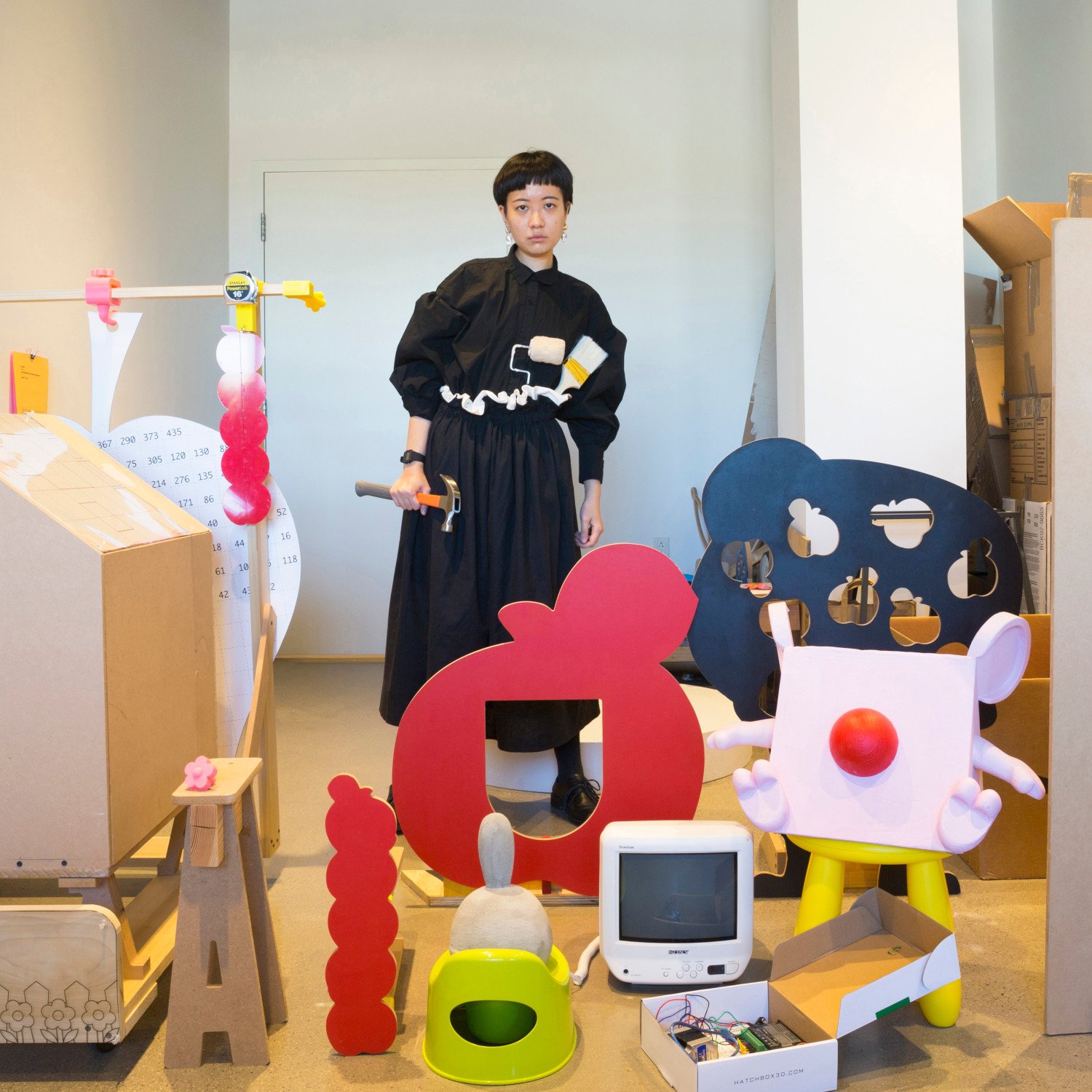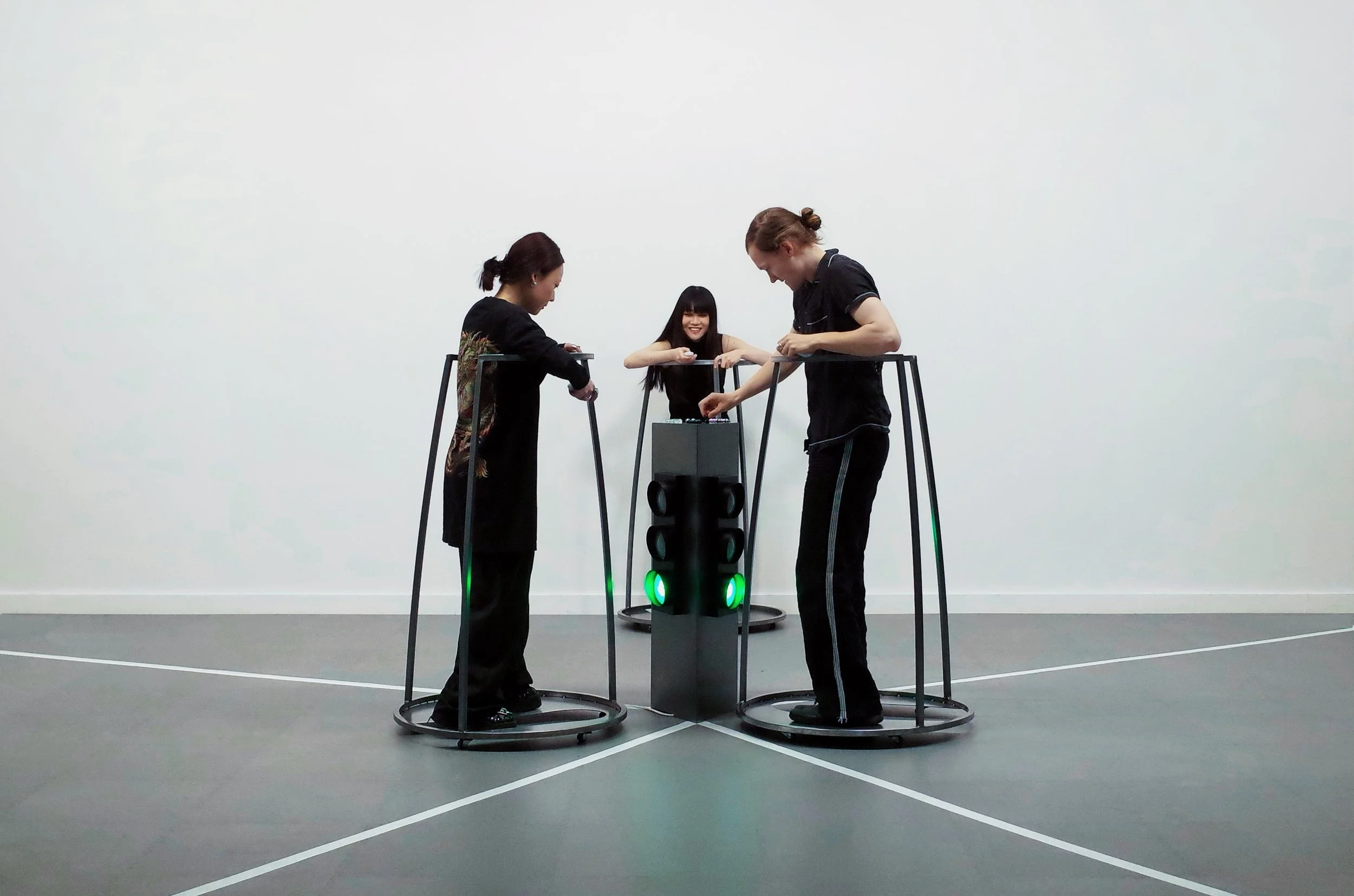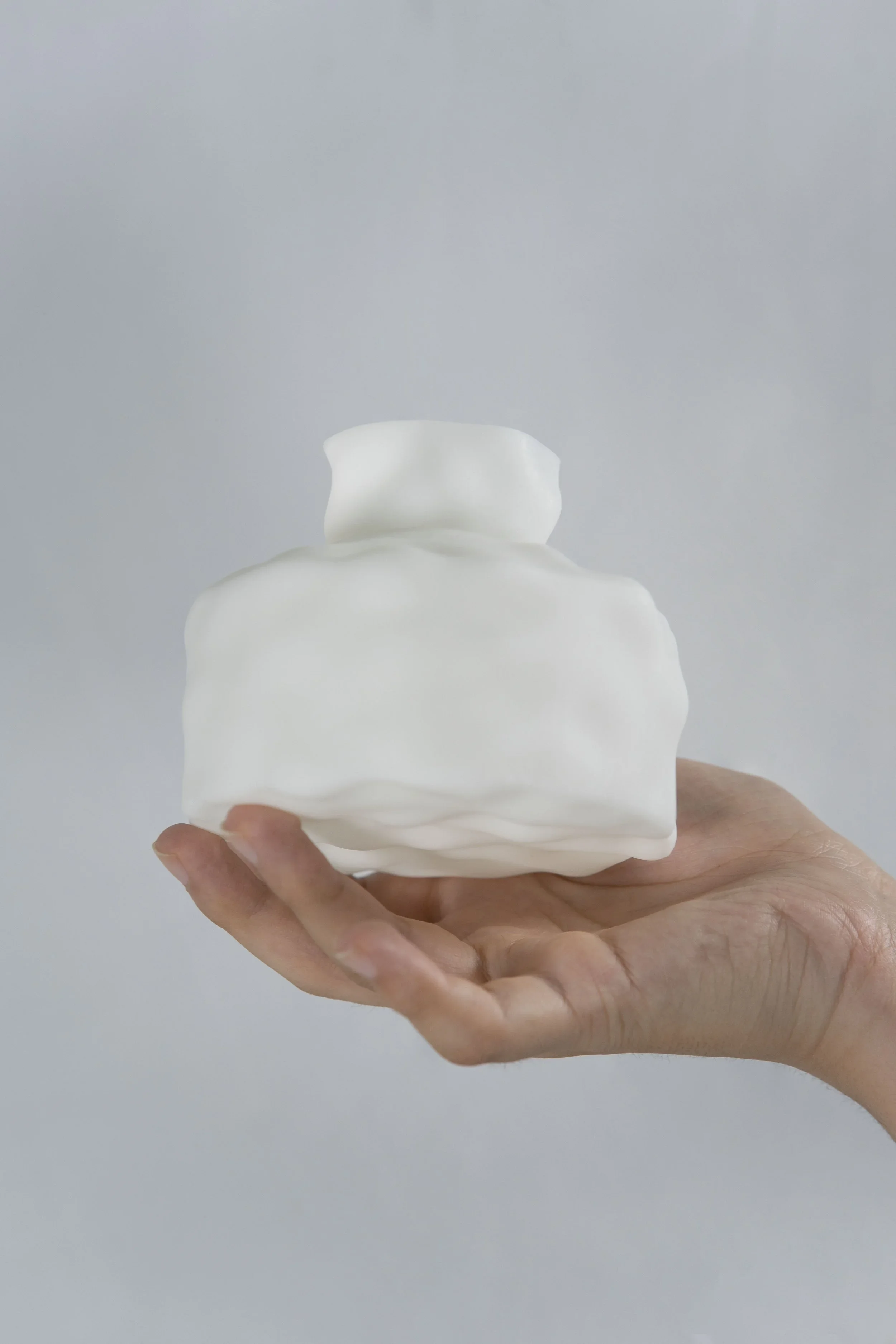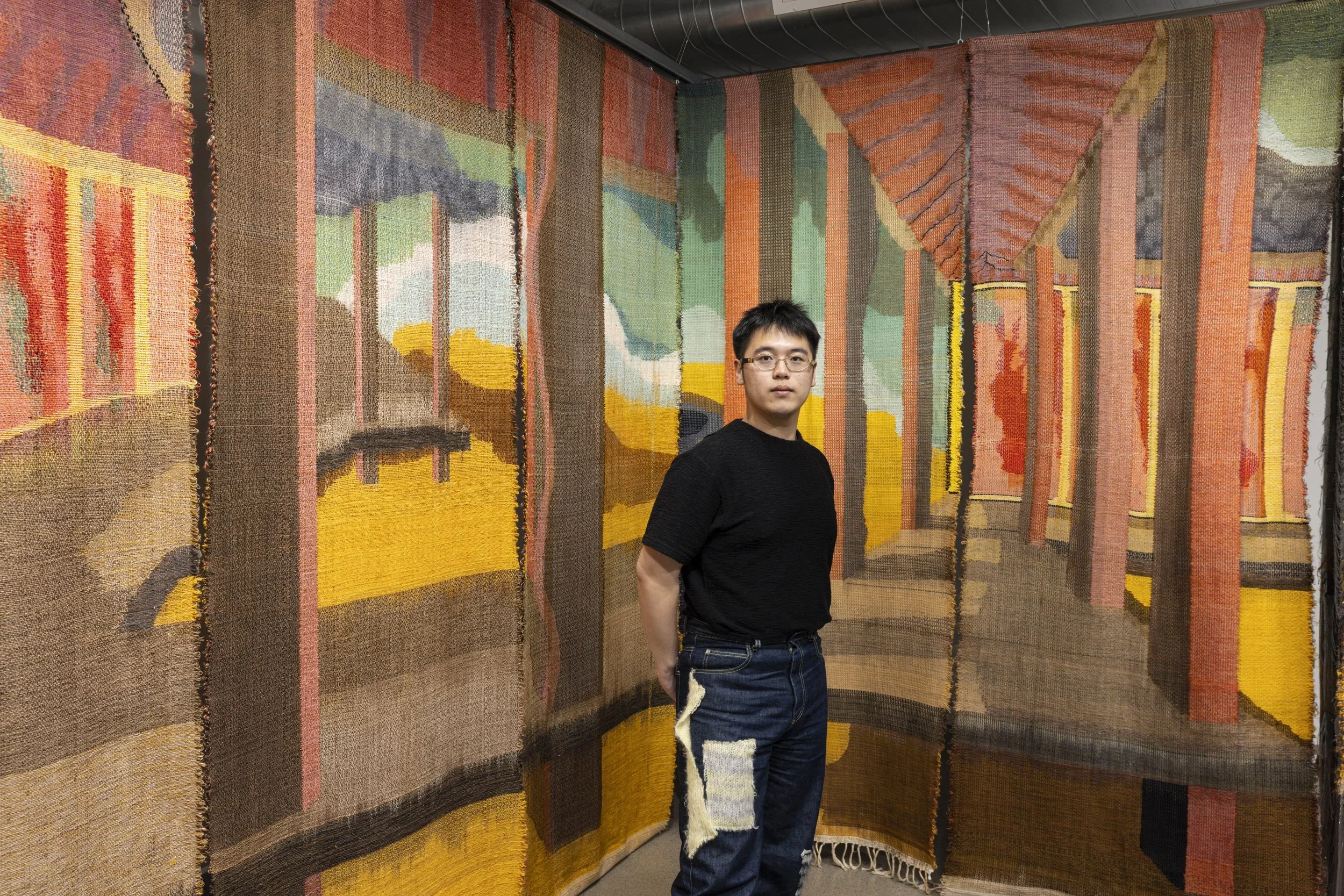10 Questions with Huidi Xiang
Huidi Xiang (b. Chengdu, China) is an artist and researcher who is currently based in Brooklyn, NY, USA. She holds an MFA in Art from Carnegie Mellon University (2021) and a BA in Architecture and Studio Art from Rice University (2018). In her practice, Huidi makes sculptural objects, installations, and systems to examine world-making processes and the coexistence of multiple contexts and narratives in late capitalism. Her current work explores the spatial and temporal effects of inhabiting both the virtual and physical worlds.
Huidi’s works have been exhibited nationally and internationally, including OCAT Biennale, Shenzhen, China, Hive Center for Contemporary Art, Beijing, China, Contemporary Calgary in Calgary, Canada, and Miller ICA in Pittsburgh, PA, USA. Huidi has also completed some artist residency programs, including ACRE Residency Program(2021), the Millay Colony for the Arts (2020), and Project Row Houses Summer Studios (2016). She is currently an artist-in-residence at NARS Foundation.
Huidi Xiang - Portrait
ARTIST STATEMENT
In her art practice, Huidi Xiang makes sculptural objects, installations, and systems to probe the spatial and temporal effects of inhabiting both virtual and physical worlds in late capitalism. She is interested in the constant wrestlings, negotiations, and translations between the virtual digital contexts and the tangible sensorial world we occupy with our bodies in an era dominated by onscreen and networked experiences. By reimagining and reconstructing elements from different on- and off-line contexts in her life, Huidi creates works to construct a realm in between, intending to cultivate alternative narratives to illustrate and fathom emerging politics and critical issues associated with the ever-expansive merging between the physical and the virtual, the real and the simulated, and the fact and the fiction in today's world.
Huidi's current research focuses on the complex interplay between play and labor in our contemporary life, where the boundaries between these two are increasingly blurred. It seems like the combination of play and labor can make both more productive and fun. Yet new exploitative logic in the guise of fun, self-engaged, and self-actualization emerges. Starting from her own exhausting and work-like gaming experience while playing life simulation video games, Huidi's research topics now include the laborious gaming culture, game worker, alienated play, the notion of gamification, the burnout culture, and the growing virtual telematic economies. Using a sculptural language, Huidi constructs a personal ontology to articulate her idiosyncratic experience and research, with the aim to understand the more extensive renewed labor structure in late capitalism. In her most recent projects working with video games like "Animal Crossing" and "Minecraft," she also incorporates data tracing and collecting as a durational performative action. Using analog gestures like manually documenting her digital gaming activities with spreadsheets and journals, Huidi is exploring the intersection of the physical and the virtual from a "play-labor" perspective, questioning the inaccessibility to the data on digital platforms, challenging invisible rules of the existing systems, and contemplating her involvement and participation as an artist in our post-industrial post-internet society.
INTERVIEW
First of all, introduce yourself to our readers. What are your history and your artistic background?
I am an artist and researcher based in Brooklyn, New York, USA. I was born and raised in Chengdu, China. Before practicing as a sculptor, I studied architectural design, when I started to pay close attention to the built environment and designed objects around me. At that time, I began to create some sculptural objects as an alternative way of exploration. Then, I gradually felt that these objects I had been making aside became a more authentic way of expression for myself. Therefore, I decided to go to grad school to develop my artistic language further. The interdisciplinary program I attended gave me a lot of freedom to experiment with different things. Now, I primarily practice as a sculptor, mainly making sculptural objects, installations, and systems, but my work also incorporates various mediums and ways of expression.
Despite your young age, you have already exhibited extensively and participated in several residency programs. How did you decide to become an artist full-time?
My main drive to become a professional artist is that I realized my art practice had become my primary way of understanding this world. Art-making is also my method of communication, allowing me to express my ideas and construct alternatives to the preexisting systems surrounding me. And I always believe my artwork is the better "interface" for myself.
However, to be honest, even today, I am still hesitant to call myself an "Artist" sometimes, you know. I am still exploring how to maintain a sustainable art practice and develop a solid artistic language, but all the residency programs I have participated in before really help me to gain perspectives on different routes artists can take to have a career. During these residency programs, I got time to hang out with many artists and become friends. They showed me that there are so many different ways to be an artist. I just need to find and identify my own.
Cheese Column, Site-Specific Installation, 2019 © Huidi Xiang
Your work tackles different themes, all of them related to our current state and the society we live in. Did your past experiences as an artist and researcher influence you in choosing themes?
All the subject matters or themes in my work come from my own experiences and questions about the world around me. Art-making is my way of reflecting upon what I have been doing and thinking. My current research on the renewed relation between play and labor, for example, comes from my own gaming experience in life simulation games like Animal Crossing: New Horizons and sandbox games like Minecraft. My other installations, like Cheese Column, come from my ongoing fascination with cartoon animation since I was little.
Your work is both a reflection and a critique of pressing themes like capitalism, the digital world, and their influence on our offline existences. What ultimate message would you like to convey with your sculptures and installations?
My sculptures are always the outcome of me trying to reiterate my personal experiences or thoughts I have about my life and this world in general. And these works are all some sort of hot pots containing different things I have been thinking about at some specific time. I think, after all, with my work, I am exploring how I can navigate through this messy reality we are living in and how we can construct alternative narratives using our idiosyncratic language to respond and even counter the singular grant storyline imposed on us.
My playbench in the workground, installation, 2021 © Huidi Xiang
I am sorry but the elephant slide slid, 3D printed wood PLA, 3D printed general PLA, wood pattern printed on clear acetate, cement, MDF, wood, duct tape, 36x18x18 in, 2021 © Huidi Xiang
Your statement says that your "current research focuses on the complex interplay between play and labor in our contemporary life." How do you see these two fields intertwining? And how does this practically influence our lives?
My interest in this topic starts from my personal encounter with the blurred boundaries between play and labor while playing life simulation video games like Animal Crossing and Stardew Valley and sandbox games like Minecraft. While playing these games, I gradually realized that the game's design or mechanism was not necessarily just offering fun or leisure to the gamers. When I thought over my gaming experience in Animal Crossing, I recognized that what had started as an escapist activity of play was also a habitual obligation of laboring. The game was no longer a world in which I escaped from frustration. Instead, it gendered new forms of exhaustion. And it's not just me. So many gamers are grinding through different games every day.
On the other hand, gamification or ludification is literally everywhere now. Game-design elements and game principles are applied in various non-game contexts. Play is becoming more laborious while labor is framed as playful. It seems like the combination of play and labor can make both more productive and fun. Yet new ever-exploitative logic in the guise of fun, self-engaged, and self-actualization emerges. Somehow, the idea of offering more playfulness to increase engagement is ultimately just another way of exploiting productivity and creativity. Due to my unsettling feeling when I encountered gamification in my everyday life and my curiosity about the more extensive social condition reflected in my own gaming experience, I use my work to construct a personal ontology in order to understand these emerging politics and guide myself through all the possible traps.
Despite referencing new technologies and communication systems, your work is quite "analog," in the sense of it being not entirely digital and still presenting physical sculptures and installations. How important are new technologies for your work? And how do you keep up to date with the latest trends and innovations?
Learning about new technologies is very important in my research, and I have been following up on all the trends and innovations on various platforms. I also keep up with these trends on social media because I am interested in how people react to them.
I think my work is not trying to be futuristic or solely look at the future. With my practice, I always intend to reflect more upon our present, which is still a hot messy fusion of both the tangible physical and the simulated digital world. I use my work to create alternative narratives about our contemporary world. Therefore, analog gestures and expressions are super essential for me. On the one hand, this mixed use of analog and digital gestures is the most "honest" reflection of my own existence and experiences in this post-internet post-industrial world. On the other hand, I do think there are a lot of emerging issues hidden behind the hype around the new technologies. The analog gestures almost become my way of "hacking" into the existing technologies to investigate critical problems like the inaccessibility to the data on digital platforms and challenge the invisible rules of the existing systems.
O(0,0,0,0), 3D printed general PLA, MDF, wood, wheels, 20x45x10 in, 2021 © Huidi Xiang
Then I’ll huff, and I’ll puff, 3D printed wood PLA, 3D printed general PLA, drawings printed on clear acetate, cement, MDF, wood, tube, wheels, modified Maneki-Neko, 36x52x48 in, 2021 © Huidi Xiang
To what extent do you think the experience of the pandemic and isolation increased our need to blur the boundaries between the digital and physical world?
I think the isolation or separation caused by the pandemic definitely requires us to configure new ways of cohabiting space and building communal relationships. So it indeed needs us to reconsider the boundaries between the digital and physical world and relocate wherever we used to be on this spectrum between these two contexts. But I think it's not necessarily increasing our need to blur the boundaries further. In a way, containment can provide us opportunities for rethinking locked positions and revitalizing ideas of mutual co-existence. Yet sometimes, it's just better to draw a hard line or build a solid fence between the Zoom world and our life. I think it's a challenge for all of us to rethink our current existence and how we can pave new routes in the making of congruous interactions.
What do you think of the recent surge of NFTs and the Metaverse? Do you think they will have a long-lasting impact on our society, or are they just another bubble deemed to crash sooner or later?
I don't think they will completely crash. The hype around all these will eventually fall, but their impacts will be long-lasting. In other words, I think at some point, they will just be normalized somehow, and we have to keep living and engaging with it. They will just be part of our everyday life.
From another perspective, they are indeed creating some long-lasting thing in our living world. We have seen more and more discussions around cryptocurrency's energy consumption and its impact on the environment. The good thing is that some individuals and organizations have realized this issue and have started to develop alternative energy-efficient blockchains. More people have started to pay attention to the alarming relationship between crypto and the environment and the idea of tech greenwashing. Again, we are not living in a vacuum or full simulation. Yet. We need to be aware that these technologies are creating physical consequences that we can just simply ignore. As creative practitioners, when we start to engage with these new technologies, we need to keep looking at them from different angles to make informed decisions.
See shovel saw, 3D printed wood PLA, 3D printed general PLA, wood pattern printed on clear acetate, cement, MDF, wood, bolt, wheels, 72x24x18 in, 2021 © Huidi Xiang
Let's talk about your future. What are you working on right now? Do you have a new exhibition or project coming up?
I am currently working on a new exhibition where I will show this new sculptural installation that will exist in both online and offline spaces. But instead of copy-and-pasting the same works, each sculpture in this installation will be presented in its assembled state in the digital space and its unassembled state in the physical space. I intend to show the constant dynamic exchange between these worlds. I am also doing some research on model kit cards and trying to incorporate this form into my sculpture. This show will be up next month.
Finally, where do you see yourself five years from now?
I will still be making playful yet serious installations, but even larger scale and scope. I hope I can have more opportunities to create site-specific or public works at that time.





















